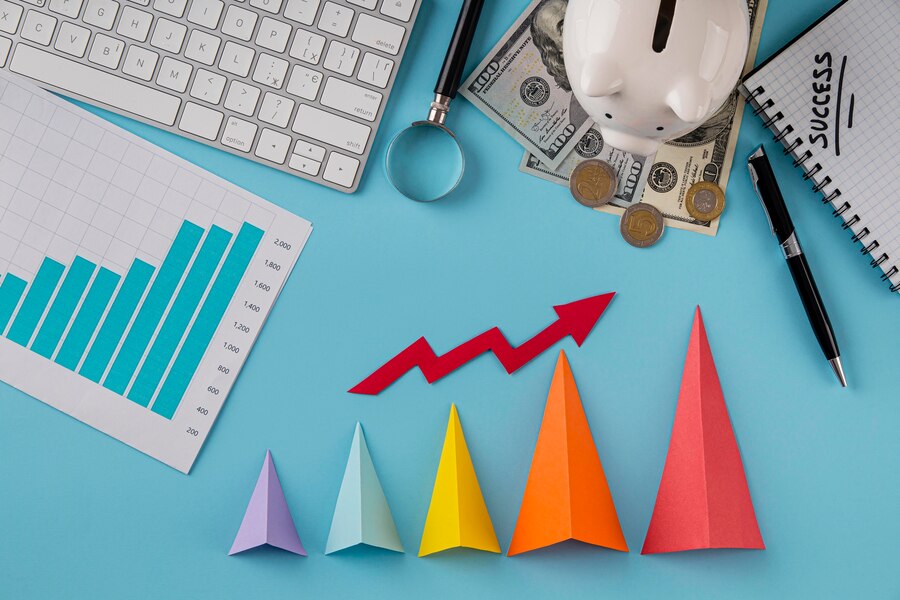Understanding The Factors In Calculating Selling Price
by Barsha Bhattacharya Sales Published on: 01 February 2024 Last Updated on: 26 September 2024

Imagine you’re at a Saturday market, eyeing a pair of hand-crafted earrings. They’re gorgeous, unique, and just your style. But how did the seller decide on the price tag? When businesses set prices, it’s not just about covering costs; it’s a nuanced dance involving various factors. Many don’t realize the complexity of calculating selling price. It’s a cocktail of direct expenses like materials and labor, indirect costs like overhead, and a thorough understanding of market trends and customer psychology. The difference between the cost of production and the final price tag determines if a business sails smoothly or sinks financially.
Breaking Down The Components Of Cost: Materials, Labor, And Overhead

The foundation of pricing starts with accounting for the tangible inputs. Raw materials take the lead, ranging from beads for our earing maker to steel for a bike manufacturer. Add in the labor—every minute of craftsmanship costs—and don’t forget about the indirect players.
Overhead costs such as rent, utilities, and equipment play a silent yet pivotal role. These components aren’t just numbers; they’re the bricks and mortar that build a product’s journey from conception to the checkout cart.
It’s important to recognize that the path from raw materials to finished products is rarely a straight line. There are often unexpected twists and turns. Material costs can fluctuate, labor markets can tighten, and overhead expenses can rise without warning.
Businesses must keep a finger on the pulse of each cost component, regularly reviewing and adjusting their calculations. Smart budgeting involves not just calculating current expenses but also anticipating future ones and integrating that foresight into pricing strategies.
Attach To The True Cost Of Production
Understanding the true cost of production ventures beyond the surface. Imagine our artisan requiring a special tool for those earrings — a cost that doesn’t show in every piece but must be distributed across the sales to recover the investment. Small-scale businesses, especially, must be adept at recognizing and assigning these ‘hidden’ costs to maintain financial health.
Meanwhile, larger businesses might benefit from economies of scale, where buying in bulk reduces material costs, and full-time salaries rationalize labor expenses. Regardless of size, precise cost allocation ensures that the selling price does justice to every minute and every ounce of material invested.
The Interplay Of Market Demand And Competition
But what happens when the market is flooded with similar beaded beauties or high-speed bikes? Then, the plot thickens. Demand can wax and wane like the phases of the moon, and competition can be as fierce as a reality cooking show. If demand is high and competition low, our seller can price those earrings like a sought-after masterpiece. But if there are many competitors, they might need to adjust their strategy, ensuring their price is compelling enough to stand out in a crowded market.
Psychological Pricing Strategies: The Charm Of Ending In .99

Ever wondered why prices often end in .99 rather than rounding up? That’s psychology winking at you from the price tag. There’s a reason it’s $19.99 and not $20—our brains see the first number and think we’re getting a deal, even if it’s just a penny’s difference. It’s these tiny details that can sway customers, making them feel like they’re winning at the game of shopping and encouraging them to take the plunge and buy.
A Few Techniques To Make A Selling Price Appealing
The following are some of the major price presentation techniques that you can use to make your selling prices more appealing to your target customers:
1. Don’t Use The Currency Symbol
Removing the currency symbol can play a big role in making the price look shorter. This is because the currency symbol seems painful to the brain. If you just keep the numbers, it will be obvious for customers to perceive them as prices.
2. Remove The Extra Characters
If your price looks shorter, it will make a simple choice for your customers. This is because the brain likes to look at things that are short and simple. Hence, you can make your price look short by removing the decimals and commas. For example, you can make $1,500.00 look like $1500.
3. Show The Price At The Bottom And Make It Look Smaller
The position of the price of the item plays a major role in determining your sales. You can decrease the perceived cost if you lower the price position. Moreover, you can make it more effective by making the price look physically smaller and insignificant. This will give the perception among your customers that the price is not a lot.
4. Change The First Digit
The first digit of a number has a huge effect on the human brain. Even though the price difference might not be a lot, it will still seem a lot to the customer. For example, if you change the leading digit of a price, like changing $3 to $2.99, it will result in more sales of the item. Furthermore, you must also make the numbers on the right side of the decimal smaller in size.
5. Shorten The Number
Shortening the size of the number helps increase the sales manifold. For example, if you have an item worth $100, drop the price to $99 to see the difference in sales. Although you are only dropping a dollar, the price looks significantly smaller. You can do the same with decimal numbers if the price is in single digits. For example, for a $5 item, change it to $4.99.
6. Break The Price Down
Your price would look cheaper if you break it down into smaller units. This helps a lot in selling something costly to customers. For example, you can break down the annual subscription fee into monthly expenses. Furthermore, you can break down the cost of monthly subscriptions to per-day costs.
7. Show The Savings
If you want to show your customers that you have a better deal than your competitors, you can show the differences in lifetime costs. The difference in the monthly price might be small. However, if you add up all the differences for the year, it would show that the customer is making a lot of savings throughout the year.
8. Show Prices In Decreasing Order
Your customers will evaluate your prices based on what they see first. If you put the $5 plan first, by the time your customer looks at the $20 plan, they will consider the latter very expensive, as it is four times the price. On the other hand, if your customers see the most expensive plan first, they will try to buy the least expensive option.
How The Right Software Can Simplify And Optimize Pricing Strategies?

In a world where time is money, businesses are turning to software to streamline their pricing strategies. Just as smartphones have replaced phone booths, modern manufacturing and inventory software are replacing spreadsheets and guesswork. With the right digital tools, it becomes easier to track costs, anticipate market changes and set prices that not only cover expenses but also maximize profits. This isn’t just about keeping the lights on; it’s about illuminating the path to business growth.
Getting the price right is part art, part science, and a good dash of technology. Entrepreneurs who master this blend can find themselves not just surviving but thriving in the bustling marketplace, turning passersby into loyal customers. Just like our earring seller—whose pieces dangle not just from the booth but also from the wish lists of many—a smart pricing strategy could well be the sparkle that catches the eye of success.



































































































